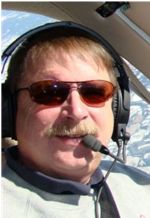
by jeff edwards
Recent accident cases involving pilots not properly completing logbook entries warrant discussion. So why should you care? Well, let’s look at a hypothetical. Say you have to shoot an actual instrument approach one evening and inadvertently go off of the runway collapsing the gear. Just for good measure, your passenger then slips off the wing while egressing and bumps her head requiring ambulance service.
The FAA inspector shows up the next morning (depending on sequestration and slimdown effects it could be much later, but I digress) to talk to you and look at the airplane. The inspector will almost certainly review your pilot logbook to see if you are current. Are you ready for that talk? Is your logbook in order?
For instance, I have seen log book entries for instrument approaches with no corresponding entry for actual or simulated instrument time (FAA rules allow you to log both actual and simulated approaches for the purposes of currency). You cannot log an approach for currency without also logging actual or simulated instrument time.
Are You Current?
The regulations state that in order to file and fly under instrument flight rules (IFR—not the weather) one must have completed and logged tracking a radial, a holding pattern and six instrument approaches in the preceding six months. So how do you log your time?
If you takeoff in VMC conditions, climb up and get to cruise altitude VMC, begin a descent in VMC and you go into the clouds at 5000’ AGL and come out the bottoms at 600’ on the approach then the time from 5000’ to 600’ is actual instrument time and one actual approach should be logged. If it is VMC the entire way and no view limiting device (hood) is used then no instrument time should be logged even if you are on an IFR flight plan. You should also note in your logbook the airport and approach you completed (for example 2.0 total flight time; .5 actual instrument time; 1 actual instrument approach; KSUS; ILS 26L). If the weather is VMC for the entire flight you may still log instrument time, but you must have a rated and current safety pilot onboard and use an approved view limiting device (instrument hood, Foggles, etc.) for the time you log. In that case you would log simulated instrument time.
For example, you take off VMC, climb VMC to cruise altitude (.5 hours), then put the hood on, descend and complete a simulated instrument approach to the Decision Altitude (.7 hours). For this flight you should log 1.2 total time; . 7 simulated instrument time; 1 simulated instrument approach KSUS; RNAV 26L; Joe Bagodonuts-Safety Pilot. Note this entry includes the name of your safety pilot; this is an FAR requirement.
Gotcha!
>Here's a red flag for an FAA inspector: Instrument time should always be less than total flight time for any given flight—unless you taxied to the runway in fog so thick you could not see the taxiway, flew the entire flight in actual instrument conditions and ended it with a CAT III approach—in fog so thick you could not see the taxiway on your way to parking.
The Official Word
The FAA has offered the following guidance in the Instrument Flying Handbook, the FAA’s principal instructional doctrine for instrument pilots:
“The instrument currency requirements must be accomplished under actual or simulated instrument conditions. You may log instrument flight time during the time for which you control the aircraft solely by reference to the instruments. This can be accomplished by wearing a view-limiting device such as a hood, flying an approved flight-training device, or flying in actual IMC.” (Instrument Flying Handbook FAA-H-8083-15A 2007)
The following question was posed to the FAA with respect to logging instrument approaches:
“As far as logging an approach in actual, is there any requirement (i.e. must it be in actual conditions beyond the final approach fix)? Assume that the pilot was flying single-pilot IFR so he couldn't simply put on the hood if he broke out?”
The following answer was given:
“§61.51(g)(1) and §61.57(c)(1)(i); Again the only place where it defines logging “instrument flight time” means “. . . a person may log instrument time only for that flight time when the person operates the aircraft solely by reference to instruments . . . .” As for logging an "actual" approach, it would presume the approach to be to the conclusion of the approach which would mean the pilot go down to the decision height or to the minimum decent altitude, as appropriate. If what you’re asking is whether it is okay to fly to the FAF and break it off and then log it as accomplishing an approach, the answer is NO.” (Frequently Asked Questions – 14 CFR, Part 61, Pilot Examiner Standardization Team, AFS-640)
On a similar note…..if your logbook indicates more than 10% of the total time is instrument time it is likely you are not logging time correctly. I recommend that pilots use the opportunity to fly with a safety pilot or CFI to hone their instrument flying skills.
